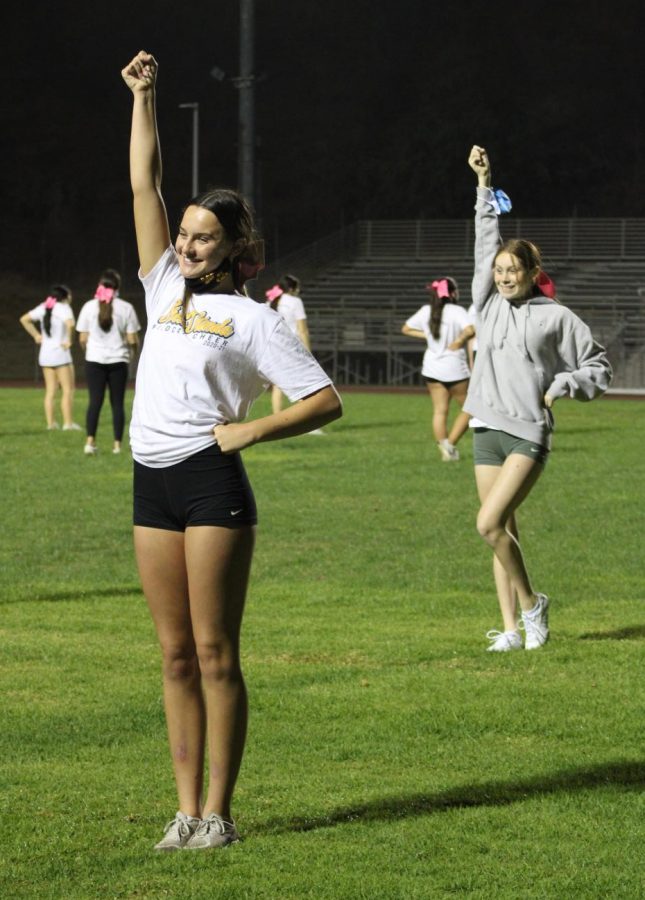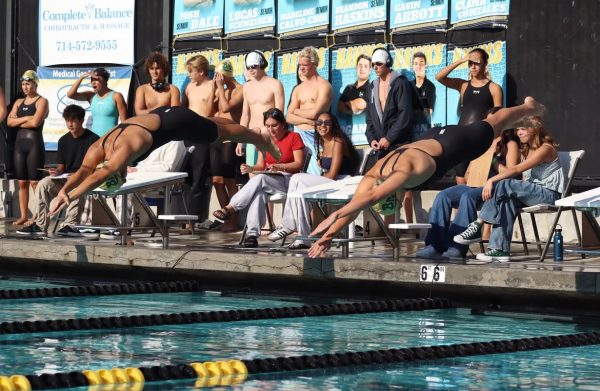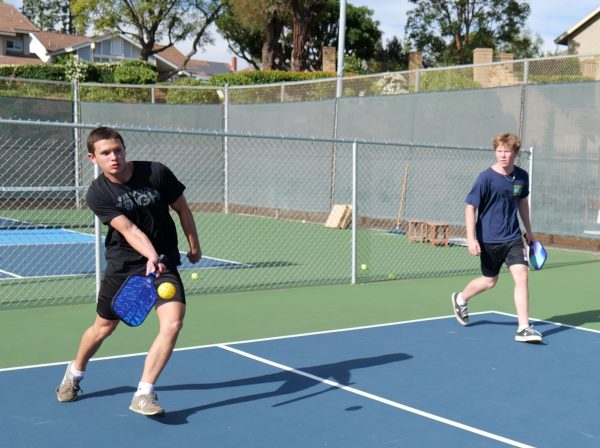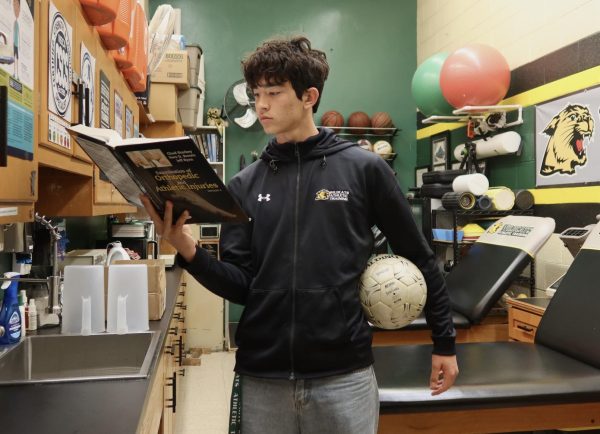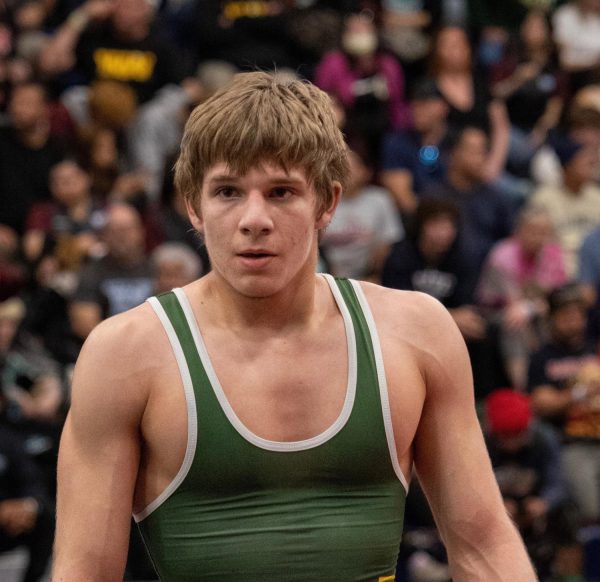‘Competitive Greatness’
Cheer coach Stefanie Camarena uses John Wooden’s wisdom to motivate defending national championship squad
Emma Hidalgo, senior, and Peyton Lustyk, sophomore, practice a cheer during an Oct. 19 practice.
“Do not let what you cannot do interfere with what you can do,” John Wooden, former UCLA basketball head coach, wrote in his book Pyramid of Success. BOHS cheer is not allowing the pandemic to interfere with its quest to defend its 2020 national championship.
Due to the COVID-19 pandemic, BOHS athletes and teams must adhere to Centers for Disease Control and Prevention (CDC) guidelines for safe practices. Stefanie Camarena, cheer head coach, plans her twice-a-week practices to follow these CDC guidelines, while a third weekly practice is held via Zoom, during which the team discusses Wooden’s wisdom.
Camarena and assistant coach Sarah Sons-Sanchez (‘18) “designated smaller cohort groups each athlete stays with during the duration of practice” to remain as physically distanced as possible. In addition to these safety measures, the team practices outside at the Wildcat Stadium on Mondays and Wednesdays, with no shared equipment. The cheer program meets 10 minutes before the designated practice time in order to complete all safety precautions, including a health survey, temperature check, and donning masks.
Sophomore Briana Edmonds thinks that these guidelines are “important to keep all our teammates and coaches safe.”
Once practice begins, each girl lays out a personal towel for working out while physically distanced. They start with full-body stretches, followed by kicks and jumps to improve flexibility. Due to the lack of physical contact, the team is conditioning with squats, jumps, and core workouts.
Despite the restrictive practices, freshman Sam Larsen shared that she is “so very grateful that we are even practicing. I enjoy it.”
Stunting is one of the most important elements of cheerleading, but “it can only be completely taught through hands-on experience,” said Codie Foster, senior. To practice stunt work while also physically distancing, suspected flyers, bases, and backspots are given instructions on how to execute their positions through flexibility stretches and form corrections.
Cheerleaders spend the remainder of practice teaching and learning cheers such as crowd-favorite “Brea-O.” The newcomers watch the leaders of their specific group and the upperclassmen demonstrate how each cheer must sound, look, and feel while performing it for future football games.
Kaylor Scovill, junior, says that “it’s important to be loud and sharp while performing cheers because the goal is to grab the audiences’ attention.”
Thursday Zoom meetings consist of Camarena reviewing Wooden’s Pyramid of Success. Camarena reviews each block in this pyramid and has the girls reflect on what he writes in order to create a national championship team. Camarena thinks “it is important to appreciate each day we are given to participate in a sport that we love,” despite the challenges the pandemic has caused.
“This is a season unlike any other,” Camarena said, “and if we do get to cheer on the sidelines and compete, we are going to have a jam-packed winter and Spring.”
Because no one knows what the future holds, Camarena understands that preparation is the only option for the cheerleaders currently. The ultimate goal if cheer does get to compete “is that we represent Brea to the best of our ability” and do their personal best.
Wooden said, “things turn out best for the people who make the best of the way things turn out,” and cheer is currently making the best of a challenging training regimen in the midst of the pandemic.
Your donation supports the student journalists at Brea Olinda High School! The contribution will help us purchase equipment, upgrade technology, and cover our annual website hosting costs.
Melea Altermatt, senior, is thrilled for her third year on the Wildcat staff as a Lifestyle co-editor, A&E co-editor, and Social Media co-manager....
Senior, Katie Kudron is a Lifestyle co-editor, A&E co-editor, and social media co-manager for the Wildcat newspaper. She is on the school's Varsity...
Alexis Alexander, senior, is one of the Photo Managers on the Wildcat. She has a strong passion for taking photos and telling stories through her pictures....



